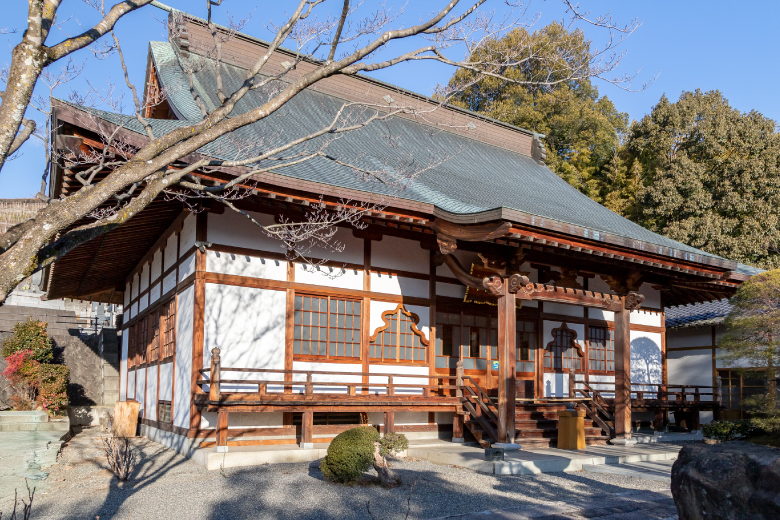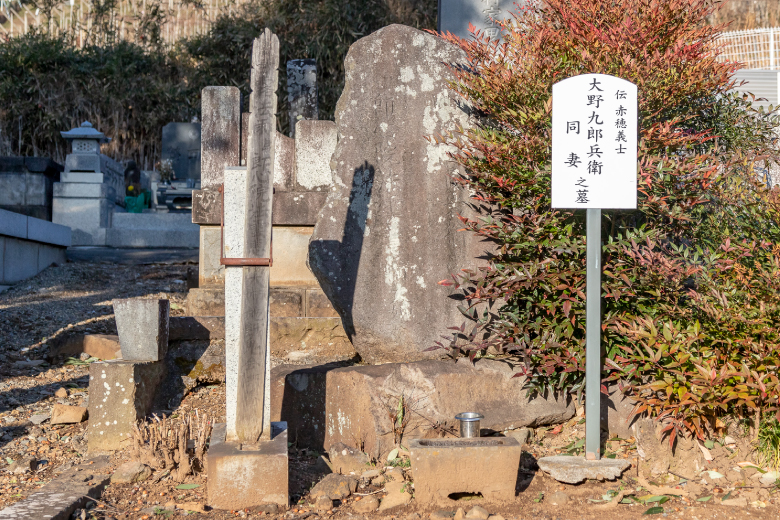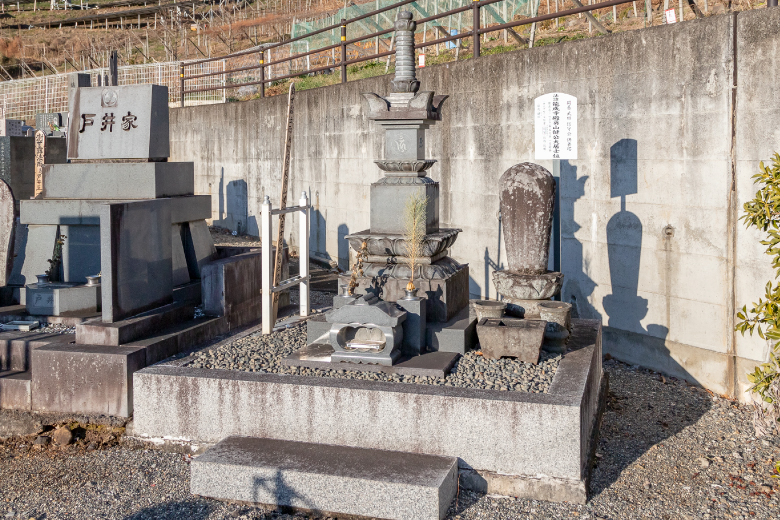Nojo-ji Temple is one of the Kofu Gozan (Five Temples of Kofu) designated for protection by Takeda Shingen. It was built during the Jowa years (1345–1350) of the Muromachi Period by Takeda Nobumori, Shingen’s great-great-grandfather and 15th head of the Takeda Clan, with Zen priest Gokkai Honjo as its founder.
The temple was initially built in Yatsushirogo Village (today’s Fuefuki City) and was relocated to Kofu-jo when Shingen headed the Takeda Clan. It was relocated once again to its present location when Kofu Castle was built in the late 16th century.
Artifacts discovered from the temple include a proclamation issued by Shingen dated December 12, 1542, a prohibition issued by the feudal lord of Kai Province Kato Mitsuyasu dated April 5, 1591, among other ancient documents. In the precincts of the temple lie a grave that is believed to be the grave of Ono Kurobe, chief retainer of the Ako Clan. A monument also stands on the temple grounds bearing the poem “Under a harvest moon / circling my pond / the night comes to an end” by haiku master Matsuo Basho. Peonies bloom in profusion from around mid-April to early-May every year.
The temple was initially built in Yatsushirogo Village (today’s Fuefuki City) and was relocated to Kofu-jo when Shingen headed the Takeda Clan. It was relocated once again to its present location when Kofu Castle was built in the late 16th century.
Artifacts discovered from the temple include a proclamation issued by Shingen dated December 12, 1542, a prohibition issued by the feudal lord of Kai Province Kato Mitsuyasu dated April 5, 1591, among other ancient documents. In the precincts of the temple lie a grave that is believed to be the grave of Ono Kurobe, chief retainer of the Ako Clan. A monument also stands on the temple grounds bearing the poem “Under a harvest moon / circling my pond / the night comes to an end” by haiku master Matsuo Basho. Peonies bloom in profusion from around mid-April to early-May every year.
COURSE MAP
Let's go to the next spot!
- 5.7km / 15min by car
- 08Takeda-jinja Shrine


